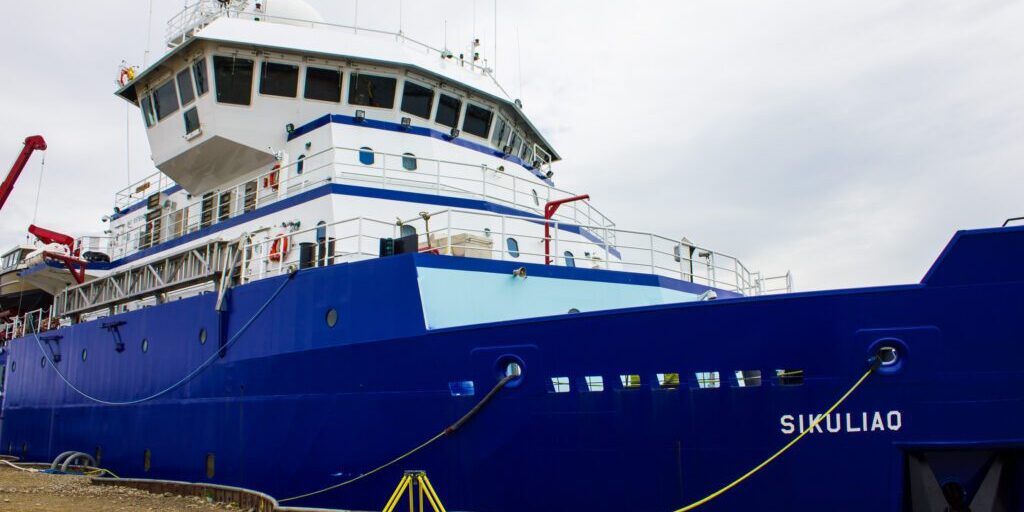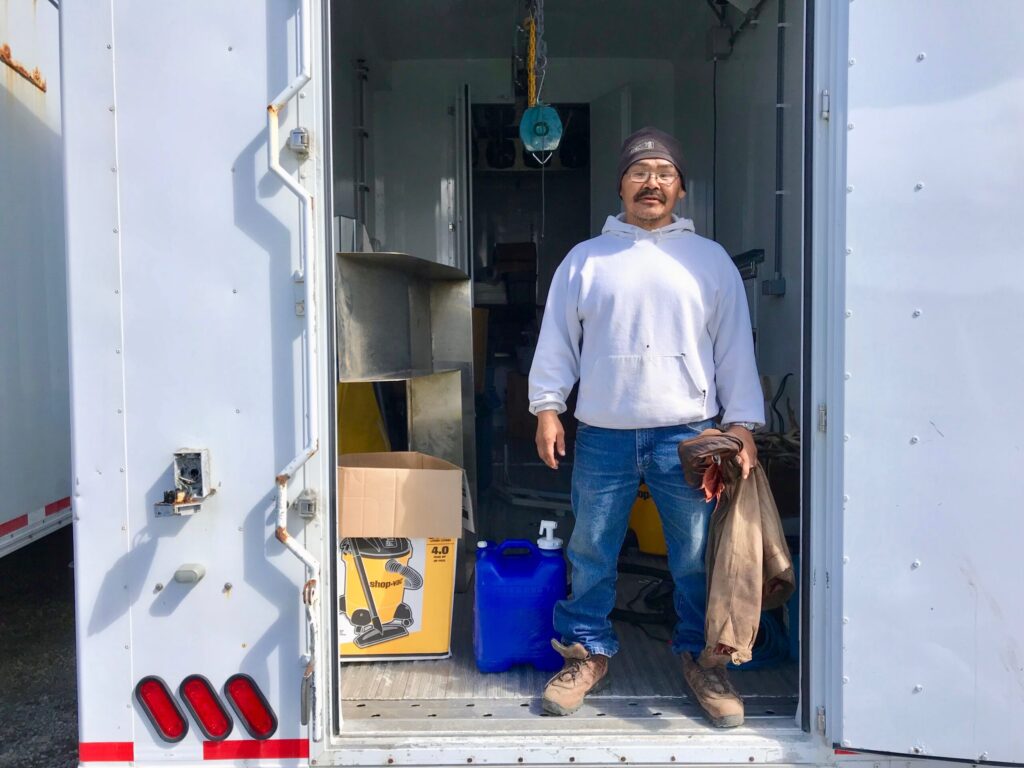The Bering Sea is getting warmer. That’s a pretty commonly accepted trend, and in Western Alaska, it looks like a lot less sea ice. But there are lots of details about how this affects marine life that we don’t really understand. And scientists are trying to figure some of those out:
Seth Danielson is a University of Alaska Fairbanks oceanographer: He studies the ocean. And for the past two summers, he’s been leading a team of about 20 scientists aboard the research vessel Sikuliaq, as they study the spring transition in the Bering and Chukchi seas.
“If you’re an ice algae that grows when the sun comes back in the springtime, and all of a sudden the amount of time that you have to do your thing is shortened by a month, how does that impact you as a community, or your role in the greater ecosystem?”
The name of the project, which is funded by the North Pacific Research Board, is a mouthful: Arctic Shelf Growth, Advection, Respiration and Deposition Rate Experiments. But Danielson says the acronym, ASGARD, is actually a perfect nickname.
“Because if you remember your Norse mythology, Asgard is the homeland of the gods, and it’s the most productive. And here we are in the Bering Strait region, a really remarkable continental shelf, because it gets perhaps the biggest flux of nutrients of any inner continental shelf in the whole world.”
That’s because the currents through the strait are like a big balancing act for the world’s oceans: Excess fresh water from the North Pacific — which has a lot of nutrients — comes up into the Arctic Ocean and then across into the North Atlantic, which is much saltier.
Of course, a lot of scientists come to study Arctic waters in the summer, but Danielson says this project is unique because they’re here a lot earlier in the year.
“There are a lot of unanswered, very fundamental questions about how fast some of the early young stages of fishes and other critters are growing, and by being out here at this time of year, we can start to get a better handle on that.”
To answer those questions, the ASGARD crew is taking a bunch of measurements over several years: water temperature and salinity, wind and current speeds, solar radiation. They also capture a whole range of small organisms like plankton, and take observations about larger ones like fish and marine mammals.
The team observed five dead seabirds this summer, which was more than expected but not quite as many as last year. And, Danielson says, while the ocean surface was cooler in some places and warmer in others, the sea floor was actually a few degrees cooler than last year. So the story’s not black and white.
“If you were to page back through the last decade or so, you’d see that the northern Bering Sea is one of the places in the globe that really hasn’t changed that much. There’s been this marine heat wave for a long time, probably since about 2013 or 2014.”
But Danielson says nobody really knows how that heat wave will continue to develop and affect the Bering and Chukchi sea ecosystems.
So the ASGARD crew will be sifting through all the data and little marine organisms they’ve collected for years, trying to decipher the hidden messages of the sea.
Image at top: R/V Sikuliaq docked in Nome (file photo: Emily Russell, KNOM).







